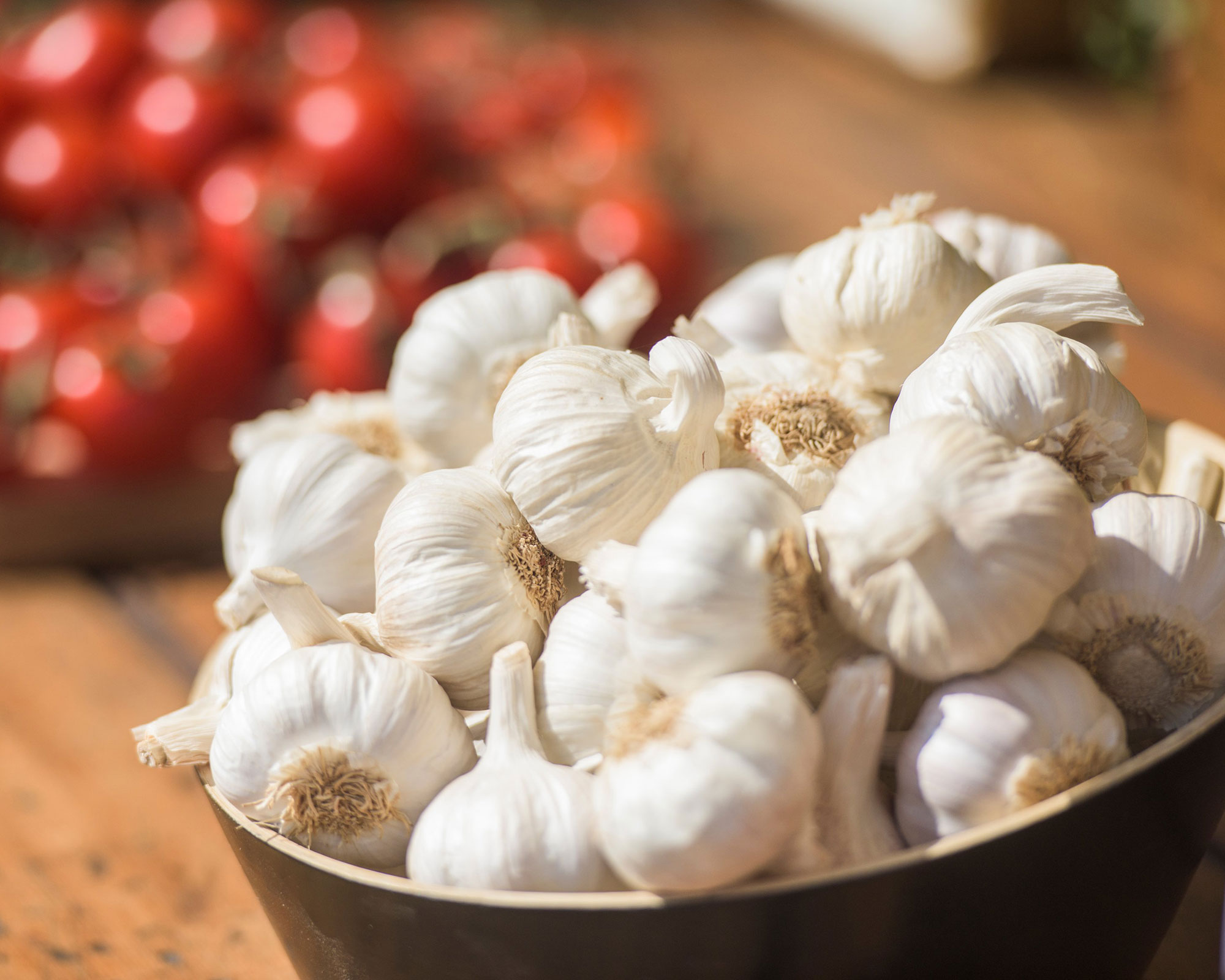How to store garlic – keep homegrown and store-bought cloves fresh
Find out how to store garlic the right way whether it came from your garden or the supermarket


To keep it in great condition and flavorful it’s vital to know how to store garlic. If you’ve cultivated it in your own veggie garden, you’ll want to benefit from your harvest for as long as possible and it’s also well worth being in the know in order to make the garlic you bought at the store last.
If you’re already savvy about how to grow garlic, you’ll be aware that it should be dried after harvesting and before storage, and you’ll find all the details on what to do here along with the steps to take to keep garlic from the store fresh and tasty.
How to store garlic
Fall is the best time to plant garlic; you can then harvest garlic in summer and then store it for use over the coming weeks. Knowing when to harvest garlic is key to ensuring it is ripe for storage. Of course, store-bought garlic can be obtained year round, but equally requires optimum conditions so it lasts. These are the details on how to store garlic.
1. Select garlic bulbs for storage
To successfully store garlic, the bulbs should be in optimum condition beforehand. Bulbs should be firm, the skin should not be broken, and they should not be sprouting or show any signs of mold.
2. Dry homegrown garlic
If you’ve grown garlic in your vegetable garden, it should be dried before it is stored. After rinsing off the soil, place it in a cool, dry well-ventilated indoor location, out of direct sunlight.
Harvested garlic can either be hung up in bunches by the tied-together stalks or spread out on wire racks or even just newspapers for drying. ‘The outer skins will become papery in about two to three weeks – the total curing time depends on the surrounding temperature and the humidity,’ explains Linda J Harris, specialist in cooperative extension, microbial food safety, department of food science and technology, University of California, Davis.
When the garlic is dry, trim off the roots and take off the outer layer of skin.
3. Store garlic bulbs
Whether it is softneck or hardneck garlic, the bulbs should be stored at room temperature. Choose a place that is well ventilated as well as cool, dry and dark. The container in which you put the bulbs should also promote airflow: choose a basket with wire mesh or a mesh bag, for example. Never store garlic bulbs in a plastic bag or keep them in a sealed container.
Thinking of putting the bulbs into the refrigerator? ‘The home refrigerator (typically 40ºF, or 4ºC) is not suitable for optimal long term storage of garlic because holding garlic at that temperature stimulates sprouting,’ says Linda J Harris.
Garlic may start to sprout when it’s been stored for a while. It’s still usable although it’s no longer at its best, but do cut the clove and remove the green sprout.
How do you store one clove of garlic?
One clove of garlic that has been peeled can be stored in the refrigerator – unlike whole bulbs which should not be stored in there.
Put it into an airtight container, but make sure to use it within a couple of days. ‘I sometimes store chopped garlic in the same way when I’ve prepared too much,’ says Lucy Searle, global editor in chief of Homes & Gardens. ‘But, if you do this, you really need to use it up the next day.’
How do you preserve garlic for a long time?
To preserve garlic for a long time you need to consider what period of storage you require. ‘Storage life is three to five months under cool (60ºF, or 16ºC), dry, dark conditions,’ says Linda J Harris. We’ve given the details on how to store garlic bulbs in this way above.
Freezing is an alternative for preservation, although you should note that it does make the texture of the garlic softer. Either put whole bulbs or cloves into a plastic freezer bag, or chop it and put it into a plastic freezer bag, then freeze.
Sign up to the Homes & Gardens newsletter
Design expertise in your inbox – from inspiring decorating ideas and beautiful celebrity homes to practical gardening advice and shopping round-ups.

Sarah is a freelance journalist and editor. Previously executive editor of Ideal Home, she’s specialized in interiors, property and gardens for over 20 years, and covers interior design, house design, gardens, and cleaning and organizing a home for Homes & Gardens. She’s written for websites, including Houzz, Channel 4’s flagship website, 4Homes, and Future’s T3; national newspapers, including The Guardian; and magazines including Future’s Country Homes & Interiors, Homebuilding & Renovating, Period Living, and Style at Home, as well as House Beautiful, Good Homes, Grand Designs, Homes & Antiques, LandLove and The English Home among others. It’s no big surprise that she likes to put what she writes about into practice, and is a serial house renovator.
-
 I've spent over 200 hours testing vacuums and swear by my two Dysons – this is how I properly clean a Dyson vacuum filter for longer-lasting appliances
I've spent over 200 hours testing vacuums and swear by my two Dysons – this is how I properly clean a Dyson vacuum filter for longer-lasting appliancesYour Dyson vacuum will last much longer and clean at its best
By Dan Fauzi Published
-
 Bethenny Frankel calls this $695 machine the 'Rolls-Royce Cullinan of coffee' – it's a must-have luxury buy for iced-coffee lovers this springtime
Bethenny Frankel calls this $695 machine the 'Rolls-Royce Cullinan of coffee' – it's a must-have luxury buy for iced-coffee lovers this springtimeThe Real Housewife swears by a luxurious machine that makes nitro cold brew, cold brew, and cold espresso at the touch of a button – here's why it's worth it
By Sophie Edwards Published